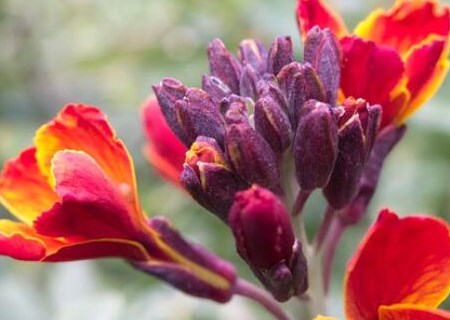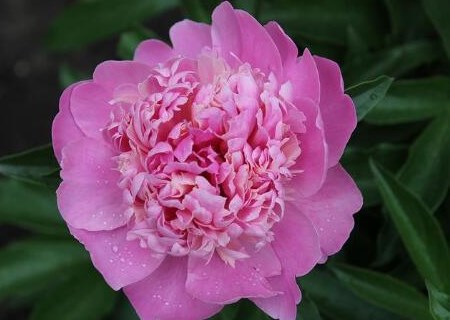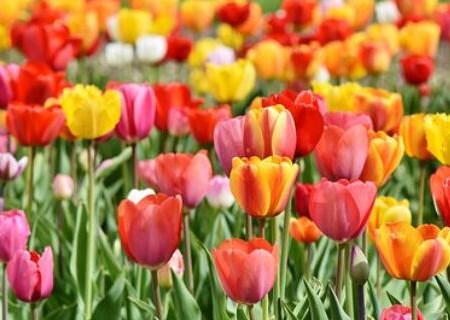What are the seed planting methods for purple jasmine, also known as Thunder Flower? Can I plant it in a flowerpot? What is the effect of
Purple jasmine is native to tropical America. It is often cultivated in the north and south of China for ornamental flowers, sometimes in the wild. So do you know what are the seed planting methods of purple jasmine? Can I plant it in a flowerpot? What is the effect and effect?

I. seed planting method of purple jasmine
1. Sowing time:
Sow in early spring, blossom and bear fruit in summer and autumn. Resistant to transplanting, fast growing and robust. It can be cultivated perennially to the south of the Yangtze River. North China is cultivated for more than one year, or the old roots are dug up at the end of autumn and placed in a 5 ℃ room to survive the winter, and the open field can still bloom in the afternoon and wither in the morning the next spring.
Purple jasmine has strong nature, strong adaptability and extensive maintenance and management. attention should be paid to:
① reproduction. Purple jasmine commonly used seed propagation, can be direct seeded in the open field in spring, pay attention to seedlings after emergence, also can first raise seedlings, when the seedlings grow 3-4 true leaves, transplant, plant spacing about 50cm, pay attention to proper shading and watering after transplanting.
② maintenance and management. Purple jasmine is easy to grow, and its maintenance and management are relatively extensive. It can be properly fertilized and watered during the growth period.
Seeds were collected by ③. Because purple jasmine is pollinated by wind, it is easy to cross among varieties. In order to ensure that the seeds harvested can maintain good characteristics, different varieties should be cultivated in isolation.
Purple jasmine likes a warm climate, the soil requires loose, rich, deep, humus-rich loam into sandy soil is better. The daily management of purple jasmine is relatively simple, spraying some water in sunny evening and topdressing dilute fertilizer twice a week in the evening, which is beneficial to normal growth. Fewer diseases and insect pests, dry weather easy to grow aphids, usually pay attention to moisturizing can prevent aphids. It is cultivated in flower beds and courtyards, and no diseases and insect pests have been found for many years. Daily management is relatively simple, spray some water in the evening in sunny days, and apply thin fertilizer once or twice a week in the evening, which is conducive to normal growth. Cultivated in flower beds and courtyards, no diseases and insect pests have been found for many years.
Can purple jasmine be planted in flowerpots
As long as we are familiar with the habits of purple jasmine and create a suitable environment for its growth, we can plant purple jasmine in flowerpots.
Purple jasmine does not belong to the jasmine family, so its growth habits are quite different from those of jasmine. It likes a mild climate, and a slightly humid tropical climate is most suitable for its growth. Because its cold resistance is not very good, when winter comes, the exposed part will dry up and die. If it is planted in the Jiangnan area of our country, then the part buried deep under the ground can safely survive the winter.
At the same time, purple jasmine does not like too much sunlight, in the process of breeding purple jasmine to provide it with a less direct sunlight environment, otherwise it will appear the phenomenon of fallen leaves. It should also be noted that a good ventilated environment is also an important factor to ensure the healthy growth of purple jasmine.
What is the effect and function of Mirabilis jasmine
1. Ornamental function
Purple jasmine is a kind of green plant with high ornamental value and good greening effect because of its extensive management and simple maintenance.
Purple jasmine will bloom purple flowers in summer and autumn, as well as yellow and white flowers and variegated flowers, just like happy trumpets. Purple jasmine has egg-shaped or heart-shaped leaves, green and interesting.
Purple jasmine flowers, always open in the evening, closed in the morning, emitting a faint fragrance, but also bear round small fruit, just like a small mine. However, what is more ornamental is the flowers and leaves of Mirabilis.
Purple jasmine can be planted in the ground or potted, planted in hedges, in front of the house, behind the house, and beside the sparse forest. When the flowers bloom, they will be like stars all over the sky and will give off fragrance. Potted plants are also very beautiful, and can also be used for landscaping.
2. Medicinal effect.
Purple jasmine not only has ornamental value, but also has certain medicinal value.
The roots, leaves and flowers of purple jasmine can be used medicinally, with the effect of clearing away heat and detoxification, promoting blood circulation, regulating menstruation and nourishing. Purple jasmine can also treat turbid, tuberculosis, hematemesis, carbuncle back, as well as acute arthritis and other diseases, can facilitate urination, anti-edema. It also plays a certain role in some gynecological diseases.
3. Other functions
Another function of purple jasmine is that it can repel mosquitoes. Purple jasmine, prefer a ventilated growth environment, when domesticated, planted in the courtyard or potted, will send out aroma, in the summer can play the effect of mosquito repellent.
Purple jasmine can also grind the seeds into powder, make makeup powder, dispel acne and get rid of acne.
Time: 2019-03-17 Click:
- Prev

What are the planting methods of peony seeds known as the national flower? How to maintain the florescence? What's the moral?
Peony flowers, beautiful color, jade smile pearl fragrance, magnificent, known as the king of flowers. It is a rare woody flower unique to China, and it is widely cultivated in China. So do you know the methods of planting peony seeds? How to maintain the florescence? What's the moral? Seed planting method of peony flower
- Next

What is the effect and function of Dutch national flower tulip? What kinds do you have? When will the seeds be sown?
Tulips, single terminal flowers, large and gorgeous, tepals red or mixed with white and yellow, sometimes white or yellow, are popular because of their bright colors. Do you know what the effect and function of tulips are besides being good-looking? What kinds do you have? When will the seeds be sown?
Related
- Fuxing push coffee new agricultural production and marketing class: lack of small-scale processing plants
- Jujube rice field leisure farm deep ploughing Yilan for five years to create a space for organic food and play
- Nongyu Farm-A trial of organic papaya for brave women with advanced technology
- Four points for attention in the prevention and control of diseases and insect pests of edible fungi
- How to add nutrient solution to Edible Fungi
- Is there any good way to control edible fungus mites?
- Open Inoculation Technology of Edible Fungi
- Is there any clever way to use fertilizer for edible fungus in winter?
- What agents are used to kill the pathogens of edible fungi in the mushroom shed?
- Rapid drying of Edible Fungi

